
featuring outcomes of attempts to explore at least 579 Possibilities of a Limited Fork Theory page system
15 December 2010
poem? ghost?

30 November 2010
"You are mathematical. You don't have to do math; you are math." -Thylias Moss
 “A Thaum is the basic unit of magical strength. It has been universally established as the amount of magic needed to create one small white pigeon or three normal-sized billiard balls.” --Terry Pratchett
“A Thaum is the basic unit of magical strength. It has been universally established as the amount of magic needed to create one small white pigeon or three normal-sized billiard balls.” --Terry PratchettAlso, I may consider a side-gig in thaumaturgy.
Yes. I think I may.
“I believe anything is possible.
Research into quantum physics
proves that a system changes
simply by someone observing it.
Therefore, all you have to do is be
awake and aware of your environment,
and that enables you to
transform everything around you.
It sounds like hocus pocus, but
scientists are coming to realize that
just thinking about something can
make it happen. Turns out maybe
faith can move mountains.”
--Christine Anderson
25 November 2010

| A Limited Fork Thanksgiving (Joined in Progress) from the paper: "In the Arc of the Fork: A Journey through Limited Fork Theory and My Imagined Life as a Multispecies Ethnographer" The dinner table is a site for limited fork study. The dinner table is a reconfigurable, expandable location. Leaves can be inserted into tables as when there are exceptional gatherings and there is a need to multiply surface to host a Cornucopia, to host the guests that travel so many forks as highways to converge on Thanksgiving Thursday (to become part of the Cornucopia). Limited Fork exists to construct and to host the Cornucopia. The fork is a tool for gathering.
As soon as the fork touches what it gathers, it changes what it gathers - inducing some modification in it – and transforming the world it has gathered from. The gathered something changes the fork, changes the gatherer. What has been gathered sticks to the forks of the tines that gather and branch, branch and gather to stock the pantry (that is itself a poam) for the making of poams. What escapes the pantry, what escapes the fork is free to take on new life, new interactions - always shaped by the contact of failed containment.
A limited fork meal consists of anything at any or all scales (of time and place) in various phases of transformation (including all phase changes), in various re-defining states of interaction.
The limited fork table adjusts and expands to contain the ever-expanding Cornucopia it attracts, that sticks to its tines (as table leaves). When the limited fork table is stretched to create space for the table leaves, a gap is produced where Cornucopia could fall through. The gap that the limited fork table creates is like the tears in muscle fiber that occur in exercise; it is also like a line break in a traditional poem in that both edge and gap (as niche) are created simultaneously. Consider Moss’s meditation of the line break cut and pasted from her blog Intro to (Limited Fork) Poetry:
“The line break is a bifurcation point, a location where an event (the line itself) has obvious opportunity for change. The corner that a line break is also offers multiple directions, some not as well formed as others; so for many interacting with the bifurcation point, only the movement to the next line seems a reasonable choice. It is a reasonable choice, but not the only choice, for the line continues, in all of the directions possible from that bifurcation point. Various conditions and interactions with variables encountered in those directions shape the structure of form of what occurs in a particular location along a particular continuing line” (Original emphasis). The limited fork Thanksgiving table {is like a poem}/{is a poam} and can be broken at any site (not all sites breaking with equal probability or preference) which changes the conditions of what can gather into the Cornucopia. What is gathered into the opening has less to do with fit than with the possibilities of the moment fed from so many tangled streams of forking presence. Limited-infinite possibility saturates every dimension of the moment and as the gathering proceeds in its processes, possibilities are foreclosed as others are enacted as registers of the real. A beauty, gift, and paradox of Limited Fork Theory is that the non-enacted possibilities - that range of infinity that we could call the Foreclosed - remain as part of the feast! |
23 November 2010
Products of Acts of Making: the Limited Fork Theory Poam as Investigation
Typically, a Limited Fork Theory investigation is carried out according to a set of rules related to the question[s] being asked.
 The maker applies the rules and documents what happens, that documentation a poam itself, the outcome system of an investigation. The outcome system is configurable, perhaps according to rules of the investigation or as solutions to how the outcome system can be displayed to help reveal interpretations and meanings of the outcome system or outcome data. (investigation logo made at spiffytext.com)
The maker applies the rules and documents what happens, that documentation a poam itself, the outcome system of an investigation. The outcome system is configurable, perhaps according to rules of the investigation or as solutions to how the outcome system can be displayed to help reveal interpretations and meanings of the outcome system or outcome data. (investigation logo made at spiffytext.com)Rules of an investigation exist whether or not the rules are explicitly stated; rules (and their companion obstructions) provide context, and configure what will be possible to consider. Rules form a context of inclusion and exclusion. Some of the nature of access is shaped by choices governing what is considered and what is not considered, what becomes possible and what becomes impossible within the context of investigation, outcomes biased or configured to respond to the parameters of the investigation. Listen to rules and obstructions in Samuel Beckett's Rule number one:
Read some of Samuel Beckett's rules and obstructions from pages 97 and 98 of Molloy:
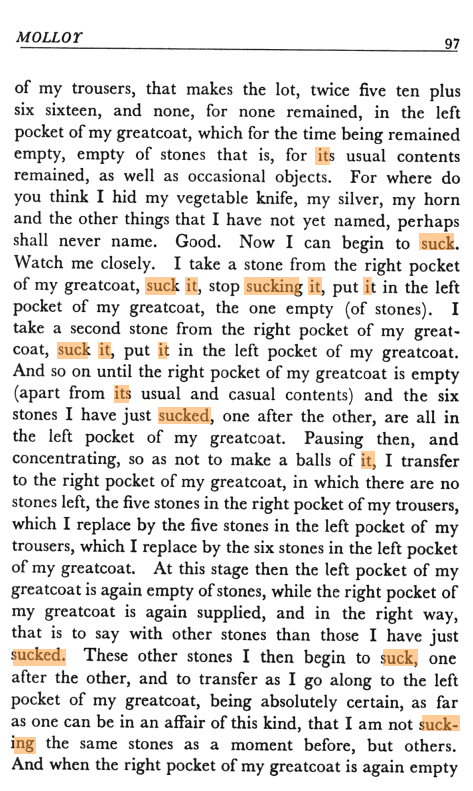
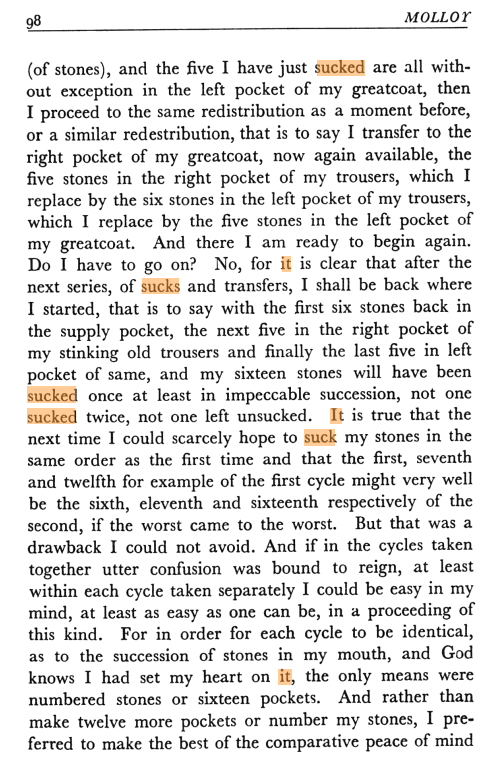
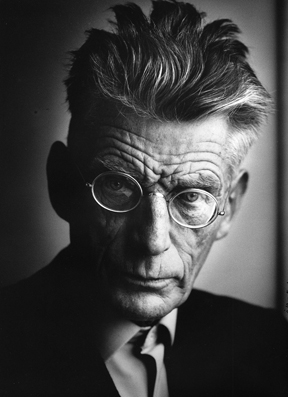
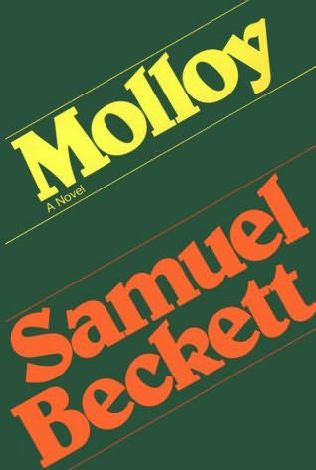 Click to investigate and experience more (rules and obstructions) of a more complete sucking stone sequence excerpted from Samuel Beckett's Molloy.
Click to investigate and experience more (rules and obstructions) of a more complete sucking stone sequence excerpted from Samuel Beckett's Molloy.In an approach to poam as investigation, revision of the outcome system, other than modes and manners of configuration for revelatory display and access of information, would be considered manipulation of data, (further) tainting of findings, so the documentation of outcome is left intact, the data is left intact in all the forms in which data was collected, and continues to be collected, some the outcome of further thinking about the data, thought configuring and reconfiguring the data set into subsets which in turn may give rise to subsets of their own (which may intersect [on some scale in some location for some duration of time] with the initial outcome data). Display and interpretation of the outcome system data is configurable and reconfigurable. When outcome system sata sems shallow or flawed, then the investigation itself can be revised or revisited —reconfigured, and new data collected according to revised parameters of investigation.
Ask different (or what the investigator might consider) better questions the next time, and the next time, and the next time.
Try to determine all the contributing factors (that you can), try to identify all collaborators (that you can) as these factors can (and probably should, as participants in a system of information and activity) shape the possible configurations of the system investigated, configurations that vary as scale, location, and time is varied and context shifts. The geometry of the investigated system is variable and complex, structures that may connect (in some form) here and here, on some scale, in some location, for some duration of time —multifaceted (regular and/or irregular) structures part of super geometric communities of temporarily connected (in some form on some scale) multifaceted (regular and/or irregular) structures.
 While in Toronto, at the CNE shortly after the publication of Tokyo Butter, I visited The Farm building where I was intrigued by an Ostrich and an unkempt man who seemed thoroughly mesmerized by the ostrich to the point of paralysis
While in Toronto, at the CNE shortly after the publication of Tokyo Butter, I visited The Farm building where I was intrigued by an Ostrich and an unkempt man who seemed thoroughly mesmerized by the ostrich to the point of paralysis 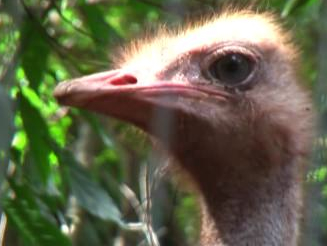 —he was able to move toward the caged Struthio camelus by only an inch per minute —powerless for having looked into the ostrich eye! He was under a spell, under hypnosis, under influence a spiritual calling, so I watched and filmed ostrich acolyte and watched and filmed ostrich, really interested in this culture of dependence and devotion (each contained by and containing the other simultaneously, a selected perspective determining momentary fixing of container or contained status —rather like the challenge of seeing both the young woman and old woman at the same time; the eye and brain shifts from one configuration to the other
—he was able to move toward the caged Struthio camelus by only an inch per minute —powerless for having looked into the ostrich eye! He was under a spell, under hypnosis, under influence a spiritual calling, so I watched and filmed ostrich acolyte and watched and filmed ostrich, really interested in this culture of dependence and devotion (each contained by and containing the other simultaneously, a selected perspective determining momentary fixing of container or contained status —rather like the challenge of seeing both the young woman and old woman at the same time; the eye and brain shifts from one configuration to the other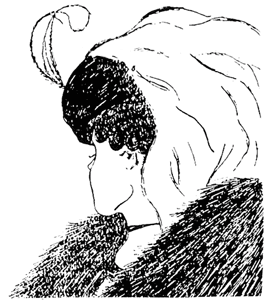 ) unfolding so publicly, a slow ecstasy that would seem dynamic and explosive only when the footage was sped up. The man in white t-shirt had white hair, dirty white pants, like, somewhat a zombie snowman come to life under the influence and power of the ostrich —and that is the possibility I investigated in a simultaneity study: The Culture of Snowmen (a text poam in Tokyo Butter) temporarily connects with the living snowman-automaton. (ostrich head image from wikipedia commons). The video poam that follows investigates this temporary contact/interaction system as a study of simultaneity.
) unfolding so publicly, a slow ecstasy that would seem dynamic and explosive only when the footage was sped up. The man in white t-shirt had white hair, dirty white pants, like, somewhat a zombie snowman come to life under the influence and power of the ostrich —and that is the possibility I investigated in a simultaneity study: The Culture of Snowmen (a text poam in Tokyo Butter) temporarily connects with the living snowman-automaton. (ostrich head image from wikipedia commons). The video poam that follows investigates this temporary contact/interaction system as a study of simultaneity.Once the video poam simultaneity study was configured, stills were extracted for a closer examination of what's inside the interaction at various locations:
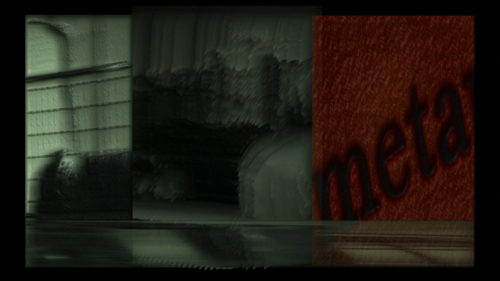
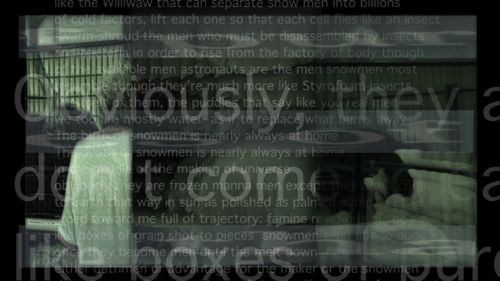
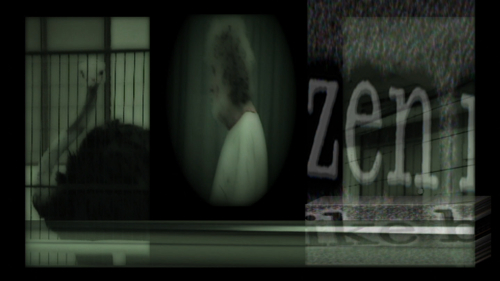
Extracted stills (many of which are from spaces between film frames, progeny of the frame that precedes and the frame that follows; from locations of interactions between frames, the connective tissue of moments)have been compiled into a small booklet of ostrich culture of snowmen interaction stills. Each still is a form of page from a dynamic video book —a closed loop video book in its unchanging playback (varying frame rate or direction in playback scenarios shifts perceptual encounters and scale without actually altering the content; the video content is perceptually configurable, and can be edited further by anyone who has or acquires editing skills, but the video content is not self-changing) of video content dependent on technological mishap for change as opposed to be a system that changes within itself over time, or on changing assessments/interpretations of the content, or on direct tinkering with the video content by an agent outside the video content, for instance. Matters of resolution of eye and screen, and sonic issues related to playback device speakers and to ears are other factors contributing to dynamic qualities (putty qualities) of configurations of the Ostrich Culture of Snowmen video poam system.
Zooming into various sections of the stills reveals detail on an even smaller scale, detail that interacts with the pixels for other understandings and interpretations of the unfolded collaborative event moment. Zooming into the zoomed outcomes will reveal even more, including what might prove to be interesting and/or useful distortions once this zooming into the zoomed outcomes occurs as a bifurcation investigation (or subsystem or extension) of the initial investigation occurs. The extracted stills already provide extended consideration of interactions with two text systems: text generated with video editing tools and text scanned with a USB microscope (like one used in an episode of CSI
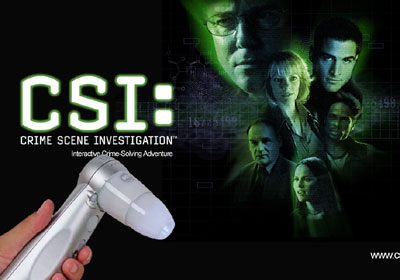 ) from the print version of The Culture of Snowmen in Tokyo Butter. Stay tuned for outcomes of this planned further forking of the investigation, that with the plan (in any form, on any scale, in any location) intact, is ongoing. (CSI/proscope image from everything USB)
) from the print version of The Culture of Snowmen in Tokyo Butter. Stay tuned for outcomes of this planned further forking of the investigation, that with the plan (in any form, on any scale, in any location) intact, is ongoing. (CSI/proscope image from everything USB)Beckett, another incurable tinkerer, investigates and tinkers with a configuration of his play What Where:
17 November 2010
DJ Adio at Beachwood Place with Phillip Bimstein's Door music reveal some of the Vibrational Ways of Doors in Augmenting [Limited Forked Theory] Configurable Spaces, including idea spaces, and a fondling of ripples of creation —riding some of those wavy portals
While at Beachwood Place Mall, looking, as usual, for evidence of interaction (such as shadows and reflections), I came upon DJ Adio in a shop window, positioned where both he and his reflection could be seen on two glass planes on which reflections from passersby also temporarily converged, diverged, then converged again on the second plane. A sampling, if you will, of space, of occupancy; a sharing of moment as he spun red discs of music I could not hear.
The sharing of space as reflections converged seemed to be a visual aspect of what the DJ was mixing; persons he did not know, could not see were becoming part of him, walking through his image, enlarging what his image could contain, just as he was enlarging sonic space and sonic meanings.
DJ Adio was functioning as a door, as a bifurcation point, as an entrance and exit point, an access point —and his gestures seemed to be shuffling what was converging, configuring the sonic and visual geometries of the connections. A fantastic door system that I wanted to highlight and explore further with Philip Bimstein's Door music and added vocal tracks expressing and exploring some gist of my observations that were part of the convergence, part of the collaboration.
DJ Adio Door Ways Ghost Relay: an adventure in vibration studies was a poam outcome of an unplanned investigation of a convergence of DJ, reflection, observation, meaning as transit system, the mixing of elements by a DJ in the configuration of a moment.
In this investigation, the movements and gestures took on more context as ripples of experience, shockwaves fanning out from a central event: the DJ's role as an assembler of realities within realities; DJ Adio was acting as a hub into which realities fed, a hub of convergence where he reassembled what converged and transmitted alternate versions, more of the other possibilities for the information that converged in his hub. DJ Adio as relay station, as transformer.
15 November 2010
on The Preparedness of Moments (a Powers of Tines consideration)

In Limited Fork Theory, the moments are always ready.
The moment of enactment, of idea taking shape, not out of nothing, but out of some energy and substance available to become the electrical and chemical activity of thought. Both the mechanisms and what powers the mechanisms of thought are available. A moment is ready to become tethered to an idea, to become part of the birth stamp of idea. A peculiar —and I think, marvelous— enlargement
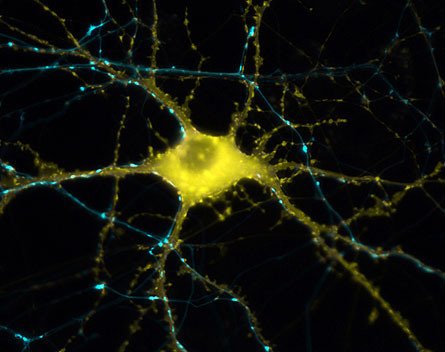 —time need not be physically stressed to accommodate moments in which idea is born. Time is apparently flexible. A moment opens, not necessarily as a slit, but in all directions and on all scales necessary for what will occupy the opening (which could also take the form of a swelling or bubble or other distortion without causing time to stop functioning). Occurrence may be experienced sequentially, but the line of sequence may take on any shape, may twist, curl, spiral, loop, fold, coil, and so forth, or may be, on some scale[s] of encounter, apparently straight. So the idea system may change shape, may be configured and reconfigured and still be supported by the time and space that host it, the configurable time and the configurable space that host it. The idea system's movement and growth are unrestricted within what is possible for movement and growth of idea systems. (image of neuron response to an electrical signal from Contemplating Thought by Susan Gaidos at Science News for Kids)
—time need not be physically stressed to accommodate moments in which idea is born. Time is apparently flexible. A moment opens, not necessarily as a slit, but in all directions and on all scales necessary for what will occupy the opening (which could also take the form of a swelling or bubble or other distortion without causing time to stop functioning). Occurrence may be experienced sequentially, but the line of sequence may take on any shape, may twist, curl, spiral, loop, fold, coil, and so forth, or may be, on some scale[s] of encounter, apparently straight. So the idea system may change shape, may be configured and reconfigured and still be supported by the time and space that host it, the configurable time and the configurable space that host it. The idea system's movement and growth are unrestricted within what is possible for movement and growth of idea systems. (image of neuron response to an electrical signal from Contemplating Thought by Susan Gaidos at Science News for Kids)Brain need not be physically stressed in order to accommodate idea systems and their possible associated infinities. But there is expansion occurring. An emerging idea system contributes to there being more in the mind than before the emergence. The idea system itself may grow, may lead to subsystems capable of as much or even more growth than any of its source systems. And there is room for the expansion, always room for expansion. I have not had to evict an idea system in order to make room for another. When inactive, it is as if the idea system is compressed for better storage, but when necessary, it may unfold, and have space for that unfolding, the size of my head apparently constant. The hat I wore before an idea system emerges sill fits after emergence.
 In the mind there are many universes. Compressed universes. And both electrical and chemical keys and locks to these kingdoms.
In the mind there are many universes. Compressed universes. And both electrical and chemical keys and locks to these kingdoms. (image of linked neurons from Contemplating Thought by Susan Gaidos at Science News for Kids)
The time and space in which thought occurs is available —the idea system will fit into the existing brain, the forms of enlargement and expansion the idea system require apparently not enlarging the brain's physical dimensions, at least not in an easily measurable way. There are bursts of electrical and chemical activity when idea systems are born—sometimes twin idea systems, triplets, or more. Explosions perhaps similar to fireworks: flowering idea systems. Luminous flowerings. Lightning, of course, as idea trails. I would love for my hair to respond to these flowerings, a glow traveling from the roots to the ends of the hair, maybe even splitting those ends more. I would like this at least once. I am thinking of this light, and it is a radiant happening in my mind. And in the mind of a mermaid I imagine thinking while submerged in water, her glowing hair like other glowing tentacles in the ocean. She comes out of the sea as if her head's on fire, strands of hair like streaks of sunset, intensified by dust and debris light filters.
Maybe I'm too easily impressed, wowed too much by existence itself —the existence of anything— but I'm taken with the wow of how there's room for an idea when the idea emerges. No pinch or squeeze in my experience. Within what exists, an access point appears to, for instance, a tube-like structure where a universe may grow, attached to a facet of a universe that itself may be attached to a facet of yet another universe or system of existence with complex geometry.
Space and time are able to accommodate the idea system, no matter how elaborate the growth of the world of that thought system. A new reality may emerge without displacing realities already active; in fact, the thinker may easily navigate to other idea system realities. The electrical and chemical streams will flow (unless damaged —in some cases, perhaps damaged on some scale in some location by aspects of the flow of the erupting idea system). Forms of displacement (including forms of distortion) can and do occur, but are not necessary, may not the norm; in most cases, a new reality of thought emerges in the brain without apparently altering space and time although space and time were full before the arrival of the idea system that prior to arrival apparently had no existence.
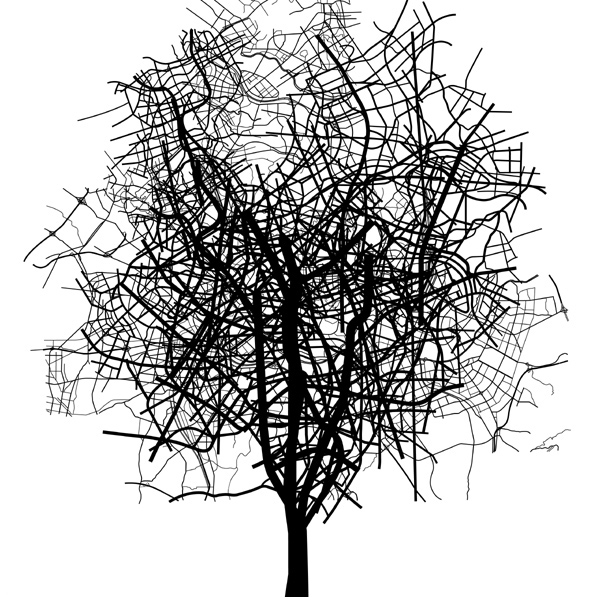 The moments are available, moment systems: moment and the tethered context of moment, the where of when, the when of where, for instance. The moment system comes in stereo, is quadrophonic, has dimensions of being, complex geometry. The possibilities of moments are arranged in all possible arrangements, fulfillment occurring when a path is selected, followed. A ideas emerges in a moment and fixes that moment to its emergence, produces a general definition further defined by subsequent choices and behavior along the path of emergence. Now are choices limited to the shaped infinities available within the context of the fixed moment, each decision reconfiguring the available possibilities within limited infinities. So there is a sequence of decision or a line of decision. A line of what happens in the idea system. The line is made of sequential components, but the shape of the line may be any possible shape. May be a spiral or curl, a loop, a zigzag, or may be straight, etc., may be of mixed form, may change direction yet still be expressible as sequence: this happened, then this happened, as the happenings form patterns and shapes of diverse and complex geometries.
The moments are available, moment systems: moment and the tethered context of moment, the where of when, the when of where, for instance. The moment system comes in stereo, is quadrophonic, has dimensions of being, complex geometry. The possibilities of moments are arranged in all possible arrangements, fulfillment occurring when a path is selected, followed. A ideas emerges in a moment and fixes that moment to its emergence, produces a general definition further defined by subsequent choices and behavior along the path of emergence. Now are choices limited to the shaped infinities available within the context of the fixed moment, each decision reconfiguring the available possibilities within limited infinities. So there is a sequence of decision or a line of decision. A line of what happens in the idea system. The line is made of sequential components, but the shape of the line may be any possible shape. May be a spiral or curl, a loop, a zigzag, or may be straight, etc., may be of mixed form, may change direction yet still be expressible as sequence: this happened, then this happened, as the happenings form patterns and shapes of diverse and complex geometries.(tree mapping of streets of Seoul from Lee jang sub's ComplexCity Project)
Every possible configuration of moment is waiting to become event, etched into a memory of happening, even what may be imagined, what happens in imagination, and what decision excludes. Possible substance is not the same as fulfilled (it has happened) substance. Available for fulfillment vs fulfilled. The where of availability lacks the physicality that defines the where of our existence; accessing the where of availability produces fulfillment, but an act of fulfillment indicates that what was necessary for fulfillment could be accessed.
The moments that are available as if in queues configured in every way that queues may be configured. So some queues bend somewhere in their queue state. Some rotate somewhere in the queue state. Some twist. Some decay. Some spring. Some (parts of) queues are concealed in (parts of) queues). Some queues are reflections, shadows, eclipse systems. Some queues commit to digesting. Some are uncommitted for now. Some are gaseous. Noisy. Some are apparently silent because their vibrations are not measured in an audible range, but the trembling is nevertheless symphonic sometimes. This is all at once. Every possibility exists. Can be mined. Plucked. And so forth. And maybe there is someone to select every possibility. Maybe there is no waste of possibility. Maybe, for this would have to be one of the possibilities, there is a version of me who still sees clearly out of the left eye.
It is as if one moment system contains all possibility, is all possibility, is contained by all possibility until defined by specifics of happening.
The moments are ready to be enacted, to become path, to become a queue of limiting factors as the moment trail unfolds.
Infinities within the limiting factor of enactment are always available.
Each selection shapes the remaining infinities, each smaller, but no less infinite.
26 October 2010
Noise of Emergency (hałas wyjątkowego)
 |
If you know this boy, tell the police." |
20 October 2010
19 October 2010
Glow

We Glow In The Dark (WGITD) is an interactive public sculpture powered by solar energy and made mobile with innovative green folding technology. The goal of WGITD is to use public sculpture as a way to bring sustainable energy and opportunitites for artistic multimedia programming to diverse communities across Philadelphia. This project is made possible with support by City Of Philadelphia and Department of Human Services and Mural Arts Program.
14 October 2010
This is actually a response to David's DJ Shadow post down there but the comment wouldnt allow my video
However, I think Oswald has been quick to distance himself from "sampling" in the traditional sense, like what is done in hip-hop. Oswald labels what he does as Plunderphonics (essay: Plunderphonics or Audio Piracy as a Compositional Prerogative) and seems to draw the distinction between Plunderphonics and sampling in that hip-hop and other sample-heavy genres, e.g. glitch, normally attempt to fit their samples into an existing peice, or a peice which will exist; either way, the sample is merely a layer among layers. To "plunder" is instead to make music exclusively out of samples, to use the sampling machine as a musical instrument in itself. To create plunderphonic music is then to use such an instrument to recreate "noise" (what we hear around us, natural or unnatural) the same way that composers (Oswald dwells on Ives in particular) create melody out of existing tone scales and public domain pieces (since many of those older composers were creating in a copyright-free era).
It seems that Oswald is aligning himself with Futurist composer Luigi Russolo, who created “music” out of assembled devices which would recreate noises such as whistling, thundering, creaking, etc, and John Cage, whose compositions using radios in the 40s and 50s (I think that’s right) preface Oswald’s own radio-derived pieces. Essentially, Oswald provides an avenue out of the copyright dilemma by asserting that A. “plundering” has been a musical tradition stretching from Bach to jazz to contemporary pop music, and B. the sampler is a unique instrument, just as are pianos, trumpets, guitars, capable of producing music that, though it may be derived entirely from other pieces, is wholly unique on its own and is thus a creation equal to any other musical or artistic creation.
I have Plexure if anybody is interested in hearing any of it, but I won’t post anything from it since I don’t want anybody unwillingly bombarded by such abrasive dissonance. I will, however, post a Girl Talk song; Girl Talk is the pseudonym for DJ Gregg Gillis, who is a contemporary mash-up artist. Mash-up, as a genre, I believe probably comes closest genre-wise to reproducing Oswald’s aims in Plunderphonics, except that mash-up, generally speaking, is party music.
The song is track number 10, I think, from Gillis' 3rd album, Night Ripper (Warning: Explicit language). The video was created by Concordia University professor Matthew Soar, for the Open Cinema Source Project.
Part of the fun of mash-up music, and Girl Talk's in particular, is also being to recognize all the samples (there's something like 200 or so,maybe more, samples spread out over 16 songs) which relates to a buzzword thats been circulating recently about the "pleasure of the known," in which culture has become so reflexive and referential that part of the cultural experience, and part of participating in society, is being able to place references (think of such fare as Mystery Science Theater 3000, Family Guy, the Simpsons, not to mention tons of poetry, etc). To be a participant and to derive pleasure from participation seems increasingly tethered to knowing sources, and being appreciate the layering of sources (a source referencing a source refering a source). Of course, this is incredibly off topic and deserves a different post entirely.
As for what David said about subdivision, I like the application to text poetry and I agree that prosody seems to be the replacement for the music that would accompany a video poem (I guess that should be reversed: music is the replacement for prosody). Or even for a video poem without music, video itself has a rhythm to it, as Russian director Andrei Tarkovsky noted in his book Sculpture in Time: "The dominant, all powerful factor of the film image is rhythm, expressing the course of time within the frame....[The expression of time]...is the very foundation of cinema...Rhythm...is not the metrical sequence of peices; what makes it is the time-thrust within the frames. Rhythm...is the main formative element of cinema....Rhythm in cinema is conveyed by the life of the object visibly recorded in the frame." (Sculpting in Time, pgs 113-120).
Anyway, I agree that sampling, or plundering involves the subdividing of ideas in a LFT kind of way; the only quibble I have, David, is your statement that "[DJ Shadow] unit[es] others' fragments". Isnt it the other way around, though? Don't his sources, and the sources for most other musical sampling/plundering begin as united, and then the artist/sampler/Dj/plunderer fragments those compositions? At least, that really only applies to music-- not that a DJ couldnt unite out of fragments, I just dont know of any case where a DJ has done so. I think the point you made is still relevant for poets though, and maybe this is where the alikeness between a DJ and a poet ends: a poet can unite fragments or fragment unities and create poetry out of either. We're lucky to have it both ways.
As for what I was supposed to post, about the supposedly French Oulipian idea about how any word has the potential and the weight of all other words (which I think I now actually picked up from Derrida, not Oulipo) I'll get to that this weekend, since what began as a simple "Hey, here's the link" has turned into something else.
05 October 2010
Drag
You know what else is happening? I'm dragging 18 18-year-olds to the museum to be with some art. i selected 15 pieces (the max) -- wildly different, hopefully intriguing to them (at least they are to me, so that's covered) for them to experience. most likely, they'll have to write about it.
so that's happening.
you know what else is happening? out of 15, only 12 will be shown. like a dozen without a baker. the other 3:
Paul Klee's "Two Trees"
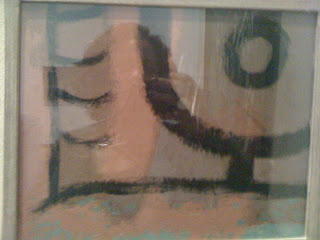
and Jenny Holzer's "Truisms" are all unavailable for the class because they are currently on display.
Which, I figure, is good enough.
For now though, because I periodically become entranced by her stuff (you know, "the page! the page! the 37 story page!"), here's some:
29 September 2010
Online Suicide Note
28 September 2010
Joke thief?
Mencia has been accused of taking original material from other comics and performing the jokes on his TV show and HBO specials without compensating the creators or even giving them writing credit. But can a comedian own a premise? Are poets or musicians who riff on the work of other artists stealing that material? Is it okay for a comic to take a premise that's been used by another comedian, put his spin on it and make money from it? Is being derivative an artistic sin? I think these questions are pertinent to any artist. Actually, listening to this interview with Mencia makes me think about writing poems--even a good idea for a poem takes a long time and a lot of work to develop into something of value. And unlike poets, who get feedback in the collegial setting of workshop, comics typically have to workshop their ideas in front of a room full of drunk people.
Comics are generally sympathetic to the difficulty of this development process, so Mencia has become an outcast in his creative community as a result of the allegations of theft. (Spicy language!)
But is Mencia stealing the craft of other artists? Should Mencia get credit for performing the jokes well, even if he didn't write the original bit? Some of the material he's accused of stealing can't be called original. They're jokes that are so obvious, everyone makes them:
But Mencia has also allegedly lifted some bits that are well-known in the comedy community as a result of having been developed and previously performed by influential comics:
A bit from Bill Cosby
A bit from Sam Kinison
A bit from George Carlin (spicy language!)
And a line from a song (spicy language!)
These are just the handful of incidents that have gotten a lot of hits on YouTube. If the allegations are true, who knows how many unknown comics Mencia may have taken material from? Part two of the interview (Part One / Part Two) recounts disturbing allegations that Mencia damaged the career of up-and-coming comedian, Freddie Soto, by appropriating his material.
27 September 2010
digital piracy
Legislation aims to Fight Digital Piracy
26 September 2010
Sampling
DJ Shadow's album, Endtroducing, was (I believe) one of the first albums ever to be composed entirely of samples from other musicians. We've brought up, in class, a LFT creative process which involves a subdivision of ideas. To make a video poem, for example, there seem to be couple of types of subdivision: of medium, where one idea is expressed in multiple formats; and of idea, where one idea is broken into pieces which are displayed simultaneously.
To play devil's advocate, though, doesn't text poetry involve a kind of subdivision of ideas, where ideas which, in prose, would be perhaps 'limited' to semantics, in poetry get expressed simultaneously by prosodic techniques?
Anyhow. I'm drawn to sampling, and to DJ Shadow, who seems to be not just subdividing ideas but uniting others' fragments and creating an atmosphere out of those seams.
22 September 2010
ONE WORD book video (featuring "fork" from "sixpack" by Thylias Moss)
 The promotional video for One Word book: contemporary writers on the words they love or loathe, edited by Molly McQuade from Sarabande Books features excerpts from fork, a section of the essay sixpack by Thylias Moss, a close associate of forkergirl.
The promotional video for One Word book: contemporary writers on the words they love or loathe, edited by Molly McQuade from Sarabande Books features excerpts from fork, a section of the essay sixpack by Thylias Moss, a close associate of forkergirl. Please enjoy this multimedia short film by Tucker Capps for Sarabande. Note the mix of active and static elements in this little film that delivers forkfuls of visual delight, the quick shift from one visual to another, continuity maintained/sustained by both the spoken text (written by forkergirl's friend) and the music by Jonathan Zalben. Note the range of visual textures. In this case, text preceded the film, inspired the film, provided both rules and obstructions in which/despite which the short film was made. The writing itself did not mandate an unfolding of content as a plot-dependent narrative —indeed; rules embedded in the structure of the writing (structure determined by tenets of Limited Fork Theory) may have made plot-dependent narrative an unlikely vehicle for content intentions or the content transcendence that occurs in this film.
One Word: Contemporary Writers on the Words They Love or Loathe from Sarabande Books on Vimeo.
From the One Word book website:
In One Word: Contemporary Writers on the Words They Love or Loathe, Molly McQuade asks the question all writers love to answer: what one word means the most to you, and why? Writers respond with a wild gallimaufry of their own choosing, from ardor to bitchin’ to themostat to wrong to very. There is corn, not the vegetable but the idea, defining cultural generations; solmizate, meaning to sing an object into place; and delicious slang, such as darb and dassn’t. Composed as expository or lyric essays, zinging one-liners, extended quips, jeremiads, etymological adventures, or fantastic romps, the writings address not only English words but also a select few from French, German, Japanese, Quechua, Basque, Igbo, and others. The result is like the best of meals, filled with color, personality, and pomp. There is something delightful and significant for every reader who picks up this wonderful book.
“This sublime anthology is poetry for people who don’t read poems, collecting 67 essays, short stories, and memoirs in which seasoned writers and novices expound, meditate, or riff on a single word. The words range from the familiar (forget by Mimi Schwartz, crash by Dan Moyer) to the obscure (darb by Erin McGraw [1920s slang for an excellent person or thing], umunnem by Kelechi Okere [an Igbo term for all one's blood relatives], from the short (a by Joel Brouwer takes up eight pages) to the long (floccinaucinihilipification by Siobhan Gordon [it means nothing]. Thylias Moss’s disquisition on fork and related words itself forks in many directions. Jason Iwen detects capitalist ideology in interesting, which first appeared in 1711 in an economic context. Poets are almost half of the contributors, but they also include critics, translators, academics, and novelists. These marvelous little pieces of writing highlight not so much the words themselves as what words do, how they exist as themselves but also as the carriers of meanings, which shift and branch into many paths real and metaphoric, juicy with sound.”
—Publishers Weekly (starred review)
“One Word is a rich and varied collection of meditations on words from the simplest (a and or) to the rarest (kankedort, with only one known occurrence) and from the most basic (doom and filthy) to the most ornately elaborate (floccinaucinihipilification). Starting with Joel Brouwer’s deeply perceptive and thoroughly entertaining exploration of the article a through Lee Martin’s narrative of childhood memories attached to the tricky word colander, Joan Connor’s vignettes associated with lilac, Eric Ormsby’s profile of or (“It’s not a showy word but a worker word, a syntactic functionary. … Or stands like a squat bouncer at the revolving door of the disjunction.”), to Mary Swander’s recounting of two billion years of geological history lying beneath topsoil, we encounter all of the many ways that language and human events intersect. In each case, the writer has chosen, to borrow wording from Maureen N. McLane’s essay on kankedort, an “exceptional word”, an “unusual word,” a word that has “lodged itself like a mystery, a word that gathered around it associations [both] personal and ramifying…” Not surprisingly in a collection of writings about language, we encounter not only discussions of words and meanings but also stories of relationships with parents, children, mates, and friends, and of the intimate and powerful forces that shape lives. It is a measure of the power and the wisdom and the charm of these pieces that a reader’s relationship with these words will never be quite the same after reading this collection. Maggie Hivnor’s words about Yeats’ use of the word half-light seem apt for this collection as well: “When poets use a word as well as that, they leave a trace of meaning on it, a fingerprint—or sheen: a new layer of lacquer, a warmth, like the time-worn glow on the newel-post of an old banister, touched by generations.” Readers of this collection too will find that the words profiled here have a new trace of meaning, a warmth, and a time-worn glow.”
—John Morse, President and Publisher of Merriam-Webster, Inc.
“At last! A dictionary for people who are words! From the eight pages that define “A” (the fifth most commonly used word in English) (“A never looks back”) to the concluding two pages of “Wrong” (“Two wrongs only make a wrong wronger.”), what we have here is a smorgasbord of sentience, a collision of serendipity and scholarship. This is a book at play in the fields of meaning, a sixpack (Thylias Moss) of quipus (Arthur Sze), a dehiscence (Forrest Gander) of florere (Vincent Katz), I (Cynthia Gaver) hope (John Rodriguez) as (we like it) (Brenda Hillman). We like it! When More’s Utopia is realized, One Word will be the vocabulary list for the SATs. (Except: there will be no SATs!)”
—Bob Holman
21 September 2010
Paul Lansky
Why Paul Lansky?
Because Lansky is an electronic music pioneer. In 1973, he composed a piece called mild und leise, an electronic riff on Richard Wagner's "Tristan Chord". The piece was composed on an IBM 360/91 mainframe computer about which Lansky wrote, "This IBM mainframe was, as far as I know, the only computer on the Princeton University campus at the time. It had about one megabyte of memory, and cost hundreds of thousands of dollars (in addition to requiring a staff to run it around the clock)."
mild und leise generated a lot of discussion when a British band, Radiohead, used looped samples from the piece as the framework of their song "Idioteque". The song appeared on Radiohead's Grammy Award winning album Kid A.
I discovered Lansky when I heard him speak about Threads, a ten movement cantata. The "threads" are interwoven preludes, arias, recitatives and choruses that occur and reoccur through the different movements. Lansky introduced the piece for the public radio show, New Sounds Live. He told us, members of the audience, that the arias and preludes would rise from struck metal. The recitatives would come from "noise instruments", including bottles and flower pots. And the choruses would come from drums. Despite the instruments on which the piece is performed, Lansky said that he uses computers to compose the music. Even though a piece, like Threads, will only use acoustic instruments in performance. As Lansky told the Atlanta Journal-Constitution, "I look forward to the day when nobody will care whether or not a computer was used in the process of making a piece." (Harrison, Shane. "Along for the 'Ride' with Paul Lansky" The Atlanta Journal/The Atlanta Constitution 2 March 2001: P3).
I don't know if he'll actually get my email, but I had to ask the question.
mild und leise, First Movement
Idioteque
IP as an Artist's Conceit
Turn On the Music
"Bobby Farell realized many people, if they had been in his position, would probably have regrets."
MERMAID AS METAPHOR (a beginning consideration from forkergirl's temporary fish eye lens advantage)
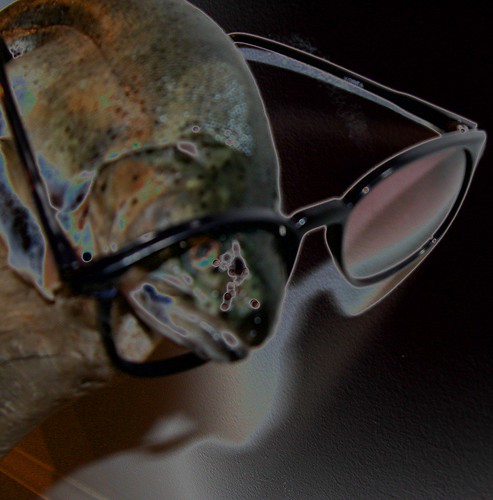 fish eye lens advantage image from forkergirl's photostream
fish eye lens advantage image from forkergirl's photostreamIn this consideration of Mermaid as Metaphor, a point of entry and a point of departure (bifurcation hub) are formed by two elements brought together (in a range of manipulations) forming a third element that is a composite of the two (1 element plus 1 element = a 3rd element [1+1=3], as Rima pointed out in a limited forked multimedia story class). At this hub is a common depiction of mermaids in which two unrelated biological segments of two organisms are brought together in (primarily visual) unification usually depicted as horizontally split halves forming wholeness: a mermaid.
This (visual) wholeness is a form of marriage, an easily imagined evolutionary progression or regression of marriage. Though the one mermaid outcome of wholeness formation is usually offered, there are at least two composites that would emerge from each union in this imagined evolution or regression. Human upper body + fish lower body, and human lower body + fish upper body. This is an answer to where's the other halves? —the human lower body and the fish upper body? An example of this more complete merger outcome scenario supplies the horror factor of The Fly (1958). The human/fly hybrid is created when a teleportation experiment meant to be an exclusively human teleportation experiment becomes a human/insect teleportation experiment when a fly is discovered inside the teleportation chamber with the scientist when the experiment is already underway and no one is there to stop the experiment. Though the human/fly hybrid is an unintended outcome, that the hybrid is an outcome indicates a form of successful, if horrifying, biological union. The film features both composite forms: human body with fly head/hand and fly body with human head/hand. Once the hybrids emerged, the assumption was that capturing the fly body/human head composite and repeating the experiment with both hybrid outcomes in the chamber, would restore the human and the fly to pre-composite forms though other possibilities would have been as likely had the fly body/human head variation not been snared in a web of spider for whom the genetic modifications of the humanized insect changed nothing.
Though I hesitate the use the term, this serves, in part, as a, well, deconstruction of the mermaid metaphor. It is a closer look inside what is and isn't occurring in the architecture of the metaphor that a mermaid is, and simultaneously is an invitation to explore what can happen/is happening inside other metaphors, using the outcomes of those explorations to establish other opportunities and forms of expression: the making of other poams (products of acts of making).
In popular depictions of mermaids, biological segments contributed by the human and by the (unspecified species of) fish seem interchangeable, largely because each segment apparently remains intact with crossover of fish into human, human into fish. The fish and human portions of a mermaid hybrid system could be separated easily. It is obvious where to cut. The human and fish segments seem closed systems stitched together (or in some other way held in place) superficially. The forming of human/fish composites seems exceedingly neat with a well-defined boundary separating fish function and appearance from human function and appearance. No transgression of species apparently occurs; nothing, well, fishy in the merger. Mermaids, rather, seem models of respect for species purity despite their being linked. No tinkering with the actual DNA as human DNA and fish genetic code don't mix, but instead exist side-by side. Good neighbors who share much, but not everything. Good spouses who share much but not everything.
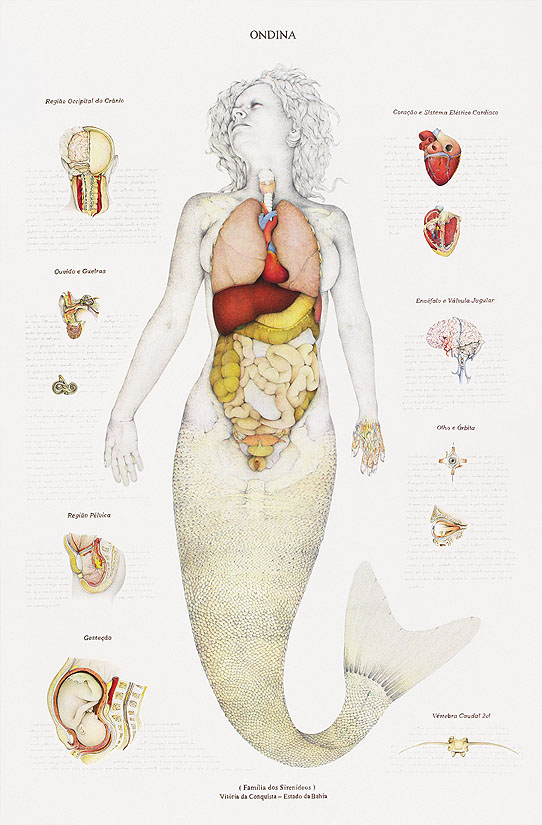 If a deeper connection is considered, the external division and separation of fish and human raises questions about function, form, and layout of internal organs. Just how is the mermaid metaphor creature mapped internally? Surely anatomical mingling occurs, or it is difficult to imagine viability of this trans-species as a species distinct from human and fish with its own biological frameworks and systems; the fish, in the more frequent ichthyological bottom half mermaid configuration, would have no heart, no brain, no circulation of human blood in fish areas. If the halves are stitched together superficially and not integrated into a single being, each half would then need separate and contained systems of respiration, systems of ingestion, systems of excretion, etc. A romanticized depiction (and why not such a depiction!) of mermaids does not support contamination of the beautiful, usually, woman, with fishiness. Indeed, the mermaid might even be a purer form of woman for rejecting genitalia in favor of fishtail; with breasts, she may suckle a child and could even seem, depending on who's constructing the idea system, nearly as wholesome and good as Mary, Mother of Christ. In this wonderful anatomical chart (to the right) of a mermaid from gearfuse.com, the internal revelation is still decidedly human in keeping with the biological structure of most mermaids; no doubt a common or typical mermaid is dissected in the well-imagined image of mermaid reality wherever it exists, in imagination, gaming, and/or virtual worlds, for instance. Mermaid Diaries is a blog all about a little mermaid named Natalia Zelmanov and her adventures in second life. Below is a video of a Spore mermaid followed by a video of a Second Life mermaid show:
If a deeper connection is considered, the external division and separation of fish and human raises questions about function, form, and layout of internal organs. Just how is the mermaid metaphor creature mapped internally? Surely anatomical mingling occurs, or it is difficult to imagine viability of this trans-species as a species distinct from human and fish with its own biological frameworks and systems; the fish, in the more frequent ichthyological bottom half mermaid configuration, would have no heart, no brain, no circulation of human blood in fish areas. If the halves are stitched together superficially and not integrated into a single being, each half would then need separate and contained systems of respiration, systems of ingestion, systems of excretion, etc. A romanticized depiction (and why not such a depiction!) of mermaids does not support contamination of the beautiful, usually, woman, with fishiness. Indeed, the mermaid might even be a purer form of woman for rejecting genitalia in favor of fishtail; with breasts, she may suckle a child and could even seem, depending on who's constructing the idea system, nearly as wholesome and good as Mary, Mother of Christ. In this wonderful anatomical chart (to the right) of a mermaid from gearfuse.com, the internal revelation is still decidedly human in keeping with the biological structure of most mermaids; no doubt a common or typical mermaid is dissected in the well-imagined image of mermaid reality wherever it exists, in imagination, gaming, and/or virtual worlds, for instance. Mermaid Diaries is a blog all about a little mermaid named Natalia Zelmanov and her adventures in second life. Below is a video of a Spore mermaid followed by a video of a Second Life mermaid show:and, in keeping with her fish contribution, is an excellent catch.
Consideration of shared biological functioning is not meant to discredit the mythic or aesthetic function of mermaid systems, and certainly does not undermine an ability of imagination to overcome problems of mermaid existence within shared physical realities. That closed biological and chemical systems can align themselves without sharing structures or circulation, may give a nod to some of the power of imagination as part of the glue maintaining the human/fish alignment. Not that everyone can (or should) use imagination in tis manner; what I refer to as imagination may be referred to differently in other cultural and/or belief systems that configure reality differently, including religions in which what some might consider supernatural is real; prayer connects a human mortal reality with a divine system of existence; prayer and belief function as bridges between these configurations.
It is quite odd, I think, that more mingling apparently does not occur at the juncture of fish and human in a mermaid system of co-dependency to be one being, one creature; why not more raggedness as these halves struggle to come together? In the production of mermaids, if something is occurring biologically, why not more evidence of mutation in the manipulation of humans and fish to produce mermaids? Where are the failures? Where are the monsters of human/fish alliances? Where are the other creature from black lagoons (gill-men) and other evolutionary missing links along the evolutionary road to mermaid? What is it about certain environments that seem to encourage emergence of human/fish hybrids? So much perfection! —similar, it seems (sorry for a lack of statistics) to a rate of perfection in production of angels or other beings embodying some human elements and some divine elements. Something in imagination apparently overcomes potential conflict in human and fish unions —did not George W. Bush say that he hoped the human and the fish could coexist peacefully? In configuring scenarios of this coexistence, some of that peaceful cohabitation would exist within a single body, half human, half fish; the bi-species creature practicing a form of political correctness in blending —indeed, Bush's statement could be construed as a call for transspecies experimentation, phase one focusing on human and fish peacful coexistence scenarios.
Had W seen Shiloh Pepin on a Discovery Channel documentary (Mermaid Girl) when he said that?
Did he realize that there was such a condition as sirenomelia, that humans were sometimes born with their legs fused in a disease commonly called mermaid syndrome, a challenging coexistence that might look peaceful? What hope for the future of humans did he foresee in improving human/fish coexistence? What's in that enhanced coexistence for Americans? for democracy? for capitalism?
In written metaphor also things come together with suspicious ease, perhaps in part because of familiarity with a long history of mythical part human creatures from ancient, classical, and sacred texts ; indeed, even Jesus Christ is a half-human outcome of a human/divine union. Evolutions occur inside metaphor; there is a journey from something to something, and details of the journey are seldom mapped. Mapping of what occurs inside metaphor could be quite revelatory and could lead to other revelatory forms of making, thinking, and/or understanding. To the left, Gort becomes The Stig, and to the right, Sambo becomes Obama in two metaphork evolutions by forkergirl. Much, much (compelling and exciting, among other forms of work) remains to be done.
Poam from DJs
I would argue that the great DJs are poets of a different page. You would probably argue back at me, right? But I learned everything I believe about form and rhythm (and love and joy) from DJs. So I'm a true believer. As an apostle of House, I was excited to find this interview with Marshall Jefferson, the DJ who developed Chicago's House music genre in the 1980s.
In this discussion, with the Guardian's Paul Morley and Orlando of Totally Enormous Extinct Dinosaurs, Jefferson addresses the question of whether the artist who spins in clubs is the oldey timey idea of disc jockey. Musician? Performer? Composer? Artist? The label may not matter to the men and women who are out there innovating. But I think that asking this question opens a window into our perception of the cultural value of artists who create their work outside the academy and without the credentials that come from some kind of accredited institution.
About the interview:
"Marshall Jefferson, who, what with one thing and another, made some records in Chicago in the 80s that, pretty much, helped work out a new form of electronically conceived post-techno anti-disco dance music that ended up being given the name house. He got fed up within a matter of months with the way that electrifying house was being turned into an easily cribbed formula, and helped turn out a zonked, fractured, pretty twisted version of house that got tagged as acid house, which soon flew into cities such as Manchester, where it was accepted and adapted with instant, addicted relish."
Marshall Jefferson, The House Music Anthem
Rachid Baba Ahmed, an Algerian club music innovator, took his art seriously enough to sacrifice himself for its creation. Rachid was killed by religious zealots for making music that they believed was offensive to God (Popular artists allegedly being murdered in Algeria, Sinclair, Abiola. New York Amsterdam News. New York, N.Y.: Oct 26, 1996. Vol. 87, Iss. 43; pg. 5). He was warned. He left Algeria and he kept creating music until he was caught and killed.
Rachid,
thorny beats
draw blood.
Raï, rave and leave.
17 September 2010
"I am so amazed at times that I am actually alive."
POAM artist Andy Goldsworthy (Thanks @Forkergirl!) ...
"when i make a work i often take it to the very edge of its collapse; and that's a very beautiful balance."
also - this artistic experiment has me thinking about the binary space of "success/failure" and what place (if any) it has in the artistic act of making. (hmmmmm)
15 September 2010
SITA SINGS THE BLUES as a Tine of Limited Forked Universe

Nina Paley generously gives her beautiful film Sita Sings the Blues to us, all of us, noting that as part of culture (made of components of culture, which includes dreams), it belongs to us already, is an assemblage, an extension of parts of human experience and human interactions with all things human and all things not human. Idea itself is in part response to that which spawns it; some existing information in some form is at part of idea's heart (as it is in this clever heart umbrella from my design pick.com):

How wonderful it is for the human community to link in inspiration and response; negatively or positively we connect, configure, and reconfigure, making a map of human experience that exposes what is marvelous about us and what is not (at times, according to principles of some temporary configurations, interchangeable).
No matter how brief the configuration in which connections succeed, I am grateful that connection occurs, and I accept that for the possibility of sublime connection, the possibility of brutal connection must be risked. Indeed; perception itself is configurable, winners and losers in the same situation. If there is connection, then all possible forms of connections will manifest on some scale in some location for some duration of time. Forms that are not possible will not manifest. Once a form manifests, that form is possible. Forms not possible in this configuration of now many become possible in the now of other circumstances. And what is not possible in a now of other circumstances will not manifest.
The seeking of interaction, a form of connection, that must occur in Limited Fork Theory, the study of interacting systems on any scale in any location for any duration of time; and the participation in interactions found are the context and focus of my ambition. Perhaps study and participation in some as yet undetermined number (so much falls between the tines of the limited fork, so I cannot be sure of anything, even that there is slippage —an incredible probability of slippage, but I have no proof of exactly what flips between the tines, for to know what slips is to have information that slippage denies; to know what falls through tines would be a form of catching what slips. I assume slippage, but what might disprove slippage I believe has slipped through the tines that themselves sponsor my adherence to slippage probability). Therefore: share, share, share!
This post (and forkergirl's other posts in this blog) joins Nina Paley in being made available for re/continued use with a creative commons share alike license:

This work is licensed under a Creative Commons Attribution 3.0 Unported License.
As most of us (to whom Sita Sings the Blues belongs) still exist in circumstances that require us to have a source or sources of income, Nina Paley is not prospering from free distribution of her wonderful film, so please consider supporting the ethics of sharing and collaborative building (the collaborative is a prevailing nature of things, it would seem, according to Limited Fork Theory, among other tools of perception/understanding) by making a donation at the Sita Sings the Blues site and/or by purchasing some of the products at Question Copyright.com Perhaps a Copyleft Tee shirt
Nothing but praises for Sita Sings the Blues and Nina Paley!
No better example of Limited Fork Theory in action!
14 September 2010
Fire Chakra and Midrift
What else would do this. This is a model rage. A fucked demiangel. A ragged melt of paint feigning womanhood. What else is new. A painting in drag. A nipple to claim itself chick.
Oh, but it's old, you bastard. It doesn't count. (Plenty want the granny status - ask them. In their Scheile lips and Goya loins.)
So then hand out pink lipsticks from Kresge in hell, and call it even. Take them dancing with the she demons and play them Gershwin.
Let them fire dance it out of their groinish systems.
 Artwork taken from artodyssey
Artwork taken from artodyssey
Zizou

Sing, goddess, of Achilles ruinous anger
Which brought ten thousand pains to the Achaeans
Image source: Wikipedia.






